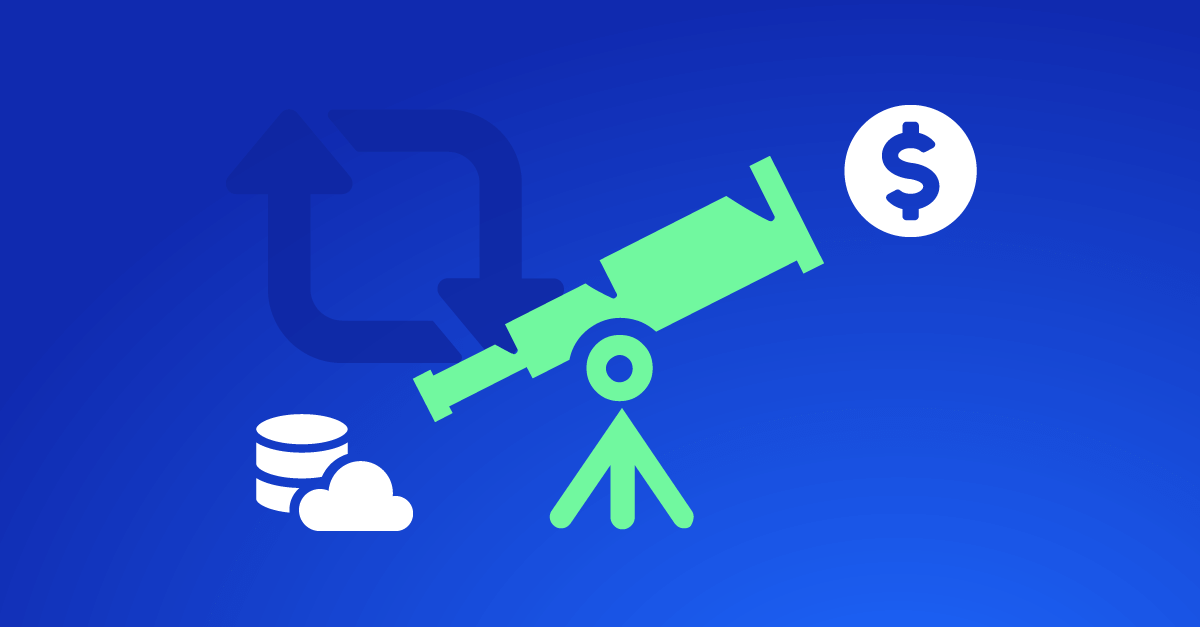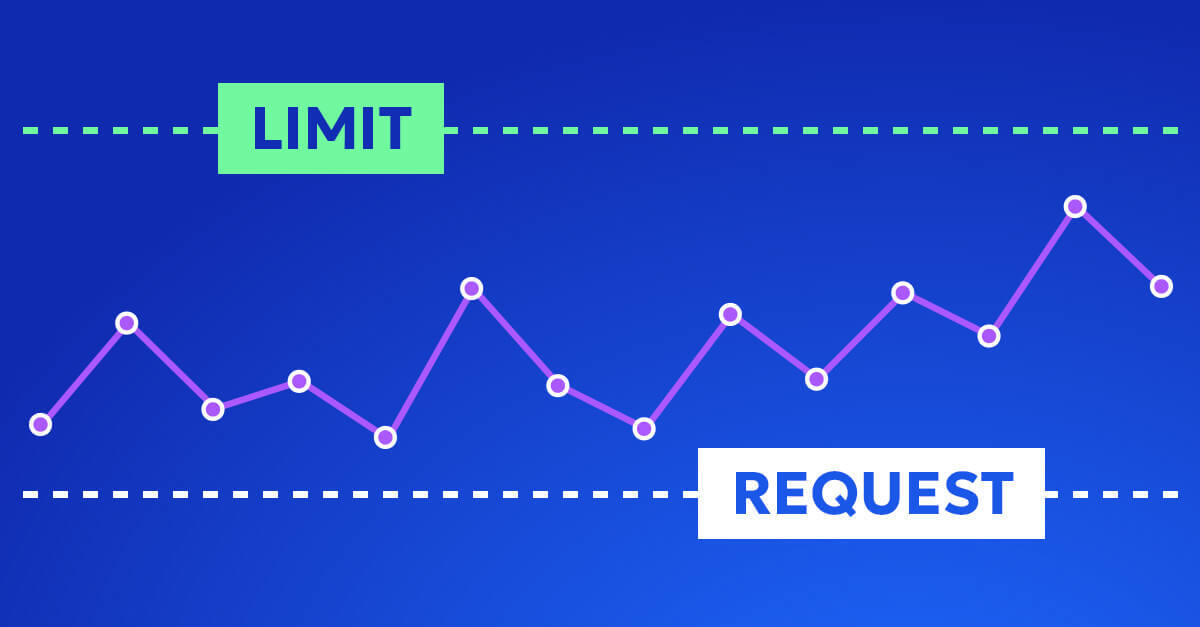The components for precise cloud cost forecasting
1. Identify key cost drivers
Cloud cost forecasting begins with understanding the key cost drivers. These include:
- Compute Costs: Charges for using virtual machines, containers, and serverless functions.
- Storage Costs: Costs associated with storing data in various storage solutions like object storage, block storage, and file storage.
- Data Transfer Costs: Expenses for transferring data between different regions, services, and out of the cloud provider’s network.
- Managed Services and Auxiliary Costs: Costs for using managed databases, machine learning services, monitoring tools, and other ancillary services.
Understanding these components allows you to break down costs and see where the bulk of your expenses lie. This is the first step in making accurate predictions and identifying potential savings.
2. Categorize fixed vs. variable costs
To forecast accurately, it’s crucial to distinguish between fixed and variable costs:
- Fixed Costs: Predictable expenses such as reserved instances and committed use contracts.
- Variable Costs: Costs that fluctuate based on usage, such as on-demand instances and data transfer.
By categorizing costs this way, you can more accurately predict future expenditures and identify areas where costs can be reduced.
3. Implement a cost allocation strategies
Effective cost allocation helps in attributing costs accurately to different departments, projects, and teams:
- Tagging and Resource Labeling: Implementing a tagging strategy to label resources based on usage, ownership, and environment. This ensures that every cost can be traced back to a specific source.
- Cost Allocation Across Departments: Allocate costs to various business units to ensure accountability and transparency. This helps in understanding which departments are consuming the most resources and why.
4. Historical data analysis
4.1 Collect historical usage and cost data
Accurate forecasting relies on historical data:
- Tools and Methods for Data Collection: Use native reporting tools like AWS Cost Explorer, Azure Cost Management, or third-party platforms to gather historical usage and cost data. These tools provide detailed insights into past consumption patterns and expenses.
- Ensure Data Accuracy and Completeness: Validate the collected data to ensure it reflects actual usage and costs. Accurate historical data is the foundation of reliable forecasts.
4.2 Analyze historical patterns and trends
Identifying trends and patterns in historical data helps predict future costs:
- Usage Trends Over Time: Analyze daily, weekly, monthly, and yearly usage trends to identify patterns. This can highlight consistent peaks and troughs in resource usage.
- Seasonality and Cyclical Patterns: Recognize seasonal variations and recurring usage patterns. Understanding these cycles helps in adjusting forecasts to account for predictable changes in usage.
5. Establish baselines and benchmarks
5.1 Defining baseline metrics
Baselines provide a reference point for comparing actual performance:
- Importance of baselines: Establishing a baseline for each cost component helps in tracking deviations and understanding the normal range of expenses.
- Creating baselines for different cost components: Set baselines for compute, storage, data transfer, and managed services costs. This allows for a more detailed and accurate comparison.
5.2 Set benchmarks
Benchmarks help measure performance against industry standards and internal goals:
- Industry Benchmarks and Standards: Compare your costs to industry averages to understand how your spending stacks up.
- Internal Benchmarks Based on Historical Data: Use past performance as a benchmark to track improvements and identify areas for further optimization.
5.3 Compare against baselines and benchmarks
Regular comparison helps identify deviations and areas for improvement:
- Identifying Deviations: Detect variances between actual costs and baselines/benchmarks. Significant deviations can indicate inefficiencies or unexpected changes in usage.
- Understanding Causes of Deviations: Analyze the reasons behind significant variances to address the root causes and make necessary adjustments.
6. Choose forecast methodologies
6.1 Quantitative Forecasting Techniques
Quantitative methods use statistical and mathematical models:
- Time Series Analysis: Techniques like ARIMA and exponential smoothing help in predicting future values based on past trends.
- Regression Analysis: Predict future costs based on relationships between variables. For example, the relationship between user growth and compute costs.
- Machine Learning Models: Use machine learning for more accurate and dynamic predictions. These models can adapt to changing patterns and provide more precise forecasts.
6.2 Qualitative Forecasting Techniques
Qualitative methods rely on expert judgment and scenario planning:
- Expert Judgment and Delphi Method: Gather insights from experienced professionals to make informed predictions.
- Scenario Planning: Consider different scenarios and their potential impact on costs. This helps in preparing for various possible futures.
6.3 Hybrid Approaches
Combining quantitative and qualitative methods provides a more comprehensive forecast:
- Combining Methods: Integrate statistical models with expert insights for a balanced approach.
- Case Studies of Successful Hybrid Forecasting: Examples of organizations using hybrid approaches effectively. This section can provide real-world applications and lessons learned.
7. Build the forecast model
7.1 Select your toolbox
Choosing appropriate tools is crucial for building effective forecast models:
- Overview of Popular Forecasting Tools: Tools like AWS Forecast, Google Cloud Forecasting offer powerful features for accurate forecasting.
- Criteria for Selecting a Forecasting Tool: Consider factors like ease of use, integration capabilities, and the specific features needed for your organization.
7.2 Develop the forecast model
A step-by-step guide to creating a forecast model:
- Step-by-Step Guide to Building a Forecast Model: Detailed instructions for model development. This includes data preparation, model selection, and implementation.
- Incorporating Different Cost Components into the Model: Ensure all relevant cost factors are included in the forecast. This provides a comprehensive view of expected expenses.
7.3 Validate and test the model
Ensuring the model’s accuracy and reliability through validation and testing:
- Techniques for Model Validation: Methods like backtesting to compare forecasted values against actual data.
- Ensuring Model Accuracy and Reliability: Continuous testing and refinement to maintain the accuracy of forecasts over time.
8. Involve key teams and personas
8.1 Identify key stakeholders
Effective forecasting involves collaboration between different teams:
- Cloud Engineers: Provide technical insights and manage resources.
- Financial Analysts: Handle budgeting and financial planning.
- DevOps Teams: Ensure operational efficiency and optimization.
- IT Management: Make strategic decisions and oversee implementations.
8.2 Collaborative forecasting processes
Defining roles and responsibilities for collaborative forecasting:
- Roles and Responsibilities of Each Team: Clear definition of tasks and accountability ensures effective collaboration.
- Communication and Coordination Strategies: Regular meetings and updates to keep all stakeholders aligned.
8.3 Training and education
Continuous learning ensures all teams are equipped with the necessary skills:
- Training Programs: Regular training sessions for all stakeholders on tools and techniques.
- Continuous Learning and Development: Keeping teams updated with the latest tools and techniques for accurate forecasting.
Learn how Zesty adjusts pod resources across dynamic workloads automatically.
9. Granularity level
9.1 Defining granularity levels
Granularity affects the accuracy and manageability of forecasts:
- Importance of Granularity in Forecasting Accuracy: Detailed forecasts provide more precise predictions but can be harder to manage.
- Different Levels of Granularity: Project, team, department, and organization-wide granularity provide different levels of detail.
9.2 Choosing the right granularity
Factors to consider when selecting granularity levels:
- Balancing Detail with Manageability: Ensure forecasts are detailed yet manageable. This balance is crucial for effective forecasting.
- Factors to Consider: Business requirements, data availability, and forecast accuracy influence the choice of granularity.
9.3 Implement granularity in forecasting
Practical steps to incorporate granularity in forecasting:
- Tools and Techniques for Granular Forecasting: Leverage advanced tools for detailed forecasts.
- Examples of Granular Data Usage in Forecasts: Real-world examples of effective granular forecasting demonstrate the benefits of detailed data.
10. Continuous monitoring and adjustment
10.1 Setting up continuous monitoring systems
Automation helps in continuous monitoring and timely adjustments:
- Automated Monitoring Tools and Dashboards: Use tools for real-time monitoring to catch anomalies early.
- Key Metrics to Monitor Continuously: Identify critical metrics for ongoing monitoring to ensure accurate forecasts.
10.2 Regular Review and Adjustment Cycles
Regular reviews ensure forecasts remain accurate and relevant:
- Importance of Regular Reviews: Periodic reviews help maintain forecast accuracy and relevance.
- Procedures for Adjusting Forecasts Based on New Data: Steps to update forecasts with new information ensure they remain accurate.
10.3 Respond to anomalies and unexpected Changes
Quick response to anomalies prevents cost overruns:
- Identifying and Diagnosing Cost Anomalies: Techniques for anomaly detection to catch issues early.
- Strategies for Mitigating Unexpected Cost Increases: Proactive measures to address cost spikes ensure financial stability.
11. Establish thresholds
11.1 Defining Acceptable Spending Ranges
Setting thresholds for cost management is crucial for maintaining control:
- Importance of Setting Thresholds: Establishing thresholds helps maintain control over spending and quickly identify deviations.
- Methods for Determining Thresholds: Use historical data and industry benchmarks to set realistic and effective thresholds.
11.2 Monitor and Adjust Thresholds
Regular monitoring and adjustment of thresholds ensure ongoing relevance:
- Tools for Automated Alerts: Implement tools that automatically alert when spending exceeds set thresholds.
- Regular Reviews and Adjustments Based on Performance: Continuously review and adjust thresholds based on actual performance to maintain their effectiveness.
12. Set the time dimension
12.1 Importance of Time Dimension in Forecasting
Incorporating time into forecasts enhances accuracy:
- Short-term vs. Long-term Forecasting: Differentiate between short-term and long-term forecasts to address various needs and scenarios.
- Daily, Weekly, Monthly, and Yearly Perspectives: Use different time frames for forecasting to capture a comprehensive view of future costs.
12.2 Implement Time Dimension in your cloud cost forecast model
Practical steps to incorporate the time dimension:
- Tools and Techniques for Incorporating Time Dimension: Leverage tools that support time-based forecasting to improve accuracy.
- Examples of Effective Time-based Forecasts: Real-world applications of time-based forecasts provide insights into best practices and common pitfalls.
Case studies
Case Study 1: E-commerce Platform
A large e-commerce platform faced challenges in predicting cloud costs due to seasonal spikes during holidays and sales events. By implementing a hybrid forecasting approach that combined historical data analysis with machine learning models, the platform was able to achieve accurate predictions and optimize resource allocation. This led to a 15% reduction in unexpected cloud costs during peak periods.
- Overview of the Company’s Cloud Usage: The company uses a range of AWS services for its e-commerce operations, including EC2, S3, and RDS.
- Challenges Faced and Solutions Implemented: The primary challenge was predicting costs during high-traffic periods. The solution involved using AWS Cost Explorer and machine learning models to analyze past data and forecast future usage.
- Results and Lessons Learned: The company achieved a significant reduction in unexpected costs and improved its resource allocation, demonstrating the effectiveness of a hybrid forecasting approach.
Learn how Zesty automatically reduces minimum replicas and delivers 5X faster application boot time to handle traffic spikes safely.
Case Study 2: Financial Services Firm
A leading financial services firm needed to improve its cloud cost forecasting to manage regulatory compliance and budget constraints. By involving key stakeholders from finance, IT, and operations, the firm developed a comprehensive forecasting model that included detailed granularity and regular monitoring. This approach enabled the firm to stay within budget and meet compliance requirements.
- Overview of the Company’s Cloud Usage: The firm uses Google Cloud Platform for its data analytics and transaction processing services.
- Challenges Faced and Solutions Implemented: The main challenge was ensuring compliance with financial regulations while managing cloud costs. The firm implemented a collaborative forecasting process involving multiple stakeholders and used GCP’s cost management tools for detailed tracking.
- Results and Lessons Learned: The firm successfully managed its cloud costs, staying within budget and ensuring compliance. The collaborative approach and detailed granularity were key factors in this success.
Key takeaways
- Key Takeaways: Effective cloud cost forecasting requires a combination of historical data analysis, stakeholder collaboration, and continuous monitoring. Using advanced tools and techniques enhances accuracy and reliability.
- Practical Tips and Best Practices: Implement a structured forecasting process, involve key stakeholders, use detailed granularity, and continuously monitor and adjust forecasts based on new data.
Conclusion
In summary, accurate cloud cost forecasting is crucial for effective financial management and strategic planning. By understanding key cost components, analyzing historical data, establishing baselines and benchmarks, employing diverse forecasting methodologies, building robust forecast models, involving key stakeholders, and continuously monitoring and adjusting forecasts, organizations can significantly enhance their cloud cost management. Implementing this comprehensive framework will lead to improved accuracy, better resource allocation, and optimized cloud spending, ultimately supporting strategic business objectives.
Further reading and resources for cloud cost forecasting
Recommended books and academic articles on cloud cost management and forecasting:
- Books and Articles:
- “Cloud FinOps: Collaborative, Real-Time Cloud Financial Management” by J.R. Storment and Mike Fuller
- “Cloud Computing: Theory and Practice” by Dan C. Marinescu
- “Forecasting: Principles and Practice” by Rob J Hyndman and George Athanasopoulos










